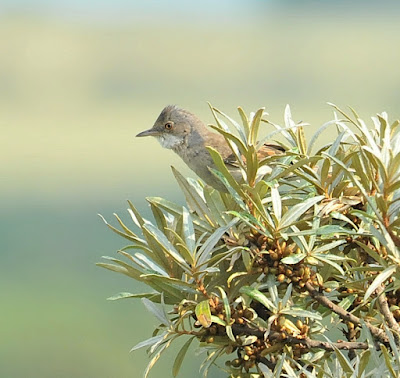Have now come full circle with a 2nd walk that begins and concludes at St James the Great church at Thorley. Here, ample parking with no height restrictions.
There are a series of stiles on this route, so not a good one for mobility scooters
Some great views and a variety of habitats so a good walk for all things natural.
Having had a look around the cemetery and pond for birds take the gate out of the graveyard behind the church and take the path south, passing plenty of engineering works. Path here is flat and even and, presently, very dry. From this vantage point you can see all the way over to Church Langley and the obvious water tower. The path crosses a field before dropping down to a hedgerow which you go through and turn left. Here you will have seen the fishing lake, where there is a small bridge which you use after which you turn left.Along the path here, the familiar call of skylarks rising from the ground based nests. In the hedgerows, smaller birds including the yellowhammer and, possibly, bull finches. A private fishing lake is on you right but the path carries on in to a long and narrow field. There is a mini stile into this fieldLovely habitat for wild plants and also plenty of dead wood. Take time to peel off some bark for beetles and bugs. Roll a smaller log over to see what is living underneath. On a warm still day there will be several species of butterfly. Check the heads of the cow parsleys for pollen feeding beetles. Some can be very colourful like the thick thighed beetle (Oedemera nobilis) and the Yellow and Black Longhorn beetle with very extended antennae. There is a small stream on the left, so check for moorhen, pied wagtails whilst if there are horses in the field on the far side, maybe yellow wagtails.
You come to a high stile, and then a gate that you have to climb over.This is someone's garden but IS a public footpathThe path goes around the back of some cottages and emerges on to Spellbrook Lane West. A narrow lane so do take care along here where you have turned left, downhill and pass Hayters lawn mower factory. This will bring you out on to the A1184 (Stortford/Sawbridgeworth Road.)
Cross with care and take Spellbrook Lane East past the Three Horseshoes pub, over the railway line and pick up the footpath on the left at the lockgates. Check here for the resident grey wagtail, the male having a bright yellow breast at present. A well plumaged bird indeed.
The towpath is narrow here, so do look ahead and make every effort to permit people to pass safely. It may mean heading backwards to find a good spot. Along the towpath here, on your right is a swampy habitat. Great for tits, finches, tree creepers and woodpeckers. On the other side of the river is an overflow area with a weir. Often wagtails can be found here. Keep looking ahead for a fly by kingfisher and sometimes cormorants can be seen roosting in a tree near the lock gates.
Soon, you will arrive at a red brick bridge on your left. Cross over and take the path directly in front that runs across the southern end of Thorley Wash reserve. Either side is sedge type habitat with wild flowers and ditches with occasional hawthorn scrub. So many birds here: whitethroat, reed warbler, sedge warbler, reed bunting and for the very lucky, a cuckoo (2 present at the moment but now late in the year for the males to be calling) or the strange "reeling" call of the grasshopper warbler. This is a repetitive noise that indeed sounds like a grasshopper. It will invariably be calling from the low vegetation and is rarely seen.
Check the ditches for water vole; plenty are present but you may just hear the plop as one sees you first and jumps into the water. Either side of this path is fenced off for good reason, the ground is very boggy to please don't climb over a fence to get a better look at anything. There is also a fallow deer, often on the left hand side before the bridge over the real River Stort that leads immediately to the footpath level crossing where there are stiles.
On the other side of the train track is a great warbler habitat, plenty of bramble.Listen for the scratchy call of the whitethroat which often perch on the top, singing their scratchy song before flying up, still in full voice and then gliding back down into the cover of the bramble.
This path emerges back on the A1184 opposite a large house (Thorley Wash Grange or similar?) and the footpath is up the drive on the right before entering a field and a slight incline. Plenty of earth works along here. Check the bank for linnets and other seed eating finches before you arrive at the lane that takes you back to the church.
A really good wander. Well worth checking out.
 |
| Linnet |
 |
| Sedge warbler. Note white eye stripe. |
 |
| Male reed bunting with easy to spot black head and bib |
 |
| Whitethroat: grey head, chestnut brown wings, white throat. |













































No comments:
Post a Comment